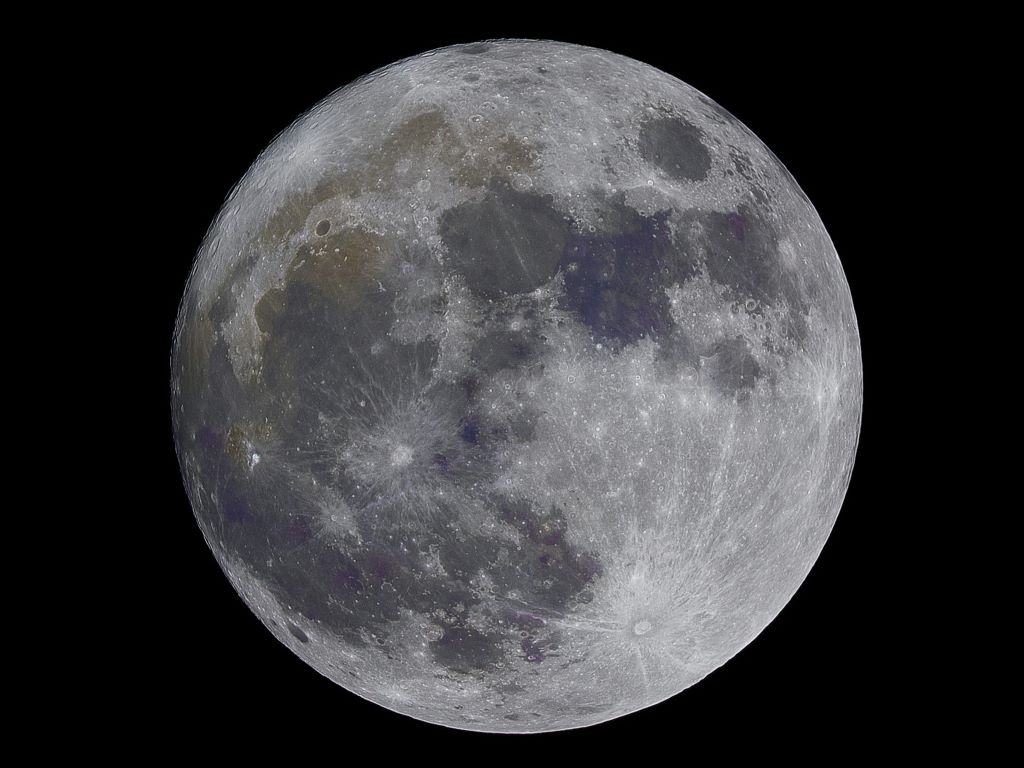Artificial Light Changes Menstrual Synchronisation with the Moon

There is no question that the moon has a significant influence on Earth. Its gravitational pull affects the planet and moves water masses in the daily rhythm of ebb and flow (tides) – this point is undisputed. More difficult to answer is the question of whether the same gravitational force also affects life on Earth, especially the human organism. And the discussion becomes even more complicated when it comes to how the fluctuating brightness of the Earth’s satellite between full and new moon affects humans.
A research team led by Julius-Maximilians-Universität Würzburg (JMU) has now presented new findings on this topic. Its conclusion: “We show that synchronisation with the moon has decreased significantly since the introduction of LEDs and the increasing use of smartphones and screens of all kinds,” explains Charlotte Förster. The Würzburg chronobiologist recently headed the Department of Neurobiology and Genetics; she now conducts research there as a senior professor.
Comparing Records from two Centuries
For their study, now published in the journal Science Advances, Förster and her team analysed long-term menstrual records of women from the past 50 years. “The results showed that the menstrual cycles of women whose records were made before the introduction of light-emitting diodes in 2010 and the widespread use of smartphones were significantly synchronised with the cycle of the full and new moon,” says Förster, describing the key finding. After 2010, the cycles were mostly only synchronized in January, when the gravitational forces between the moon, sun, and Earth are at their highest.
The scientists therefore hypothesize that humans have an internal moon clock that can be synchronised to the lunar cycle by natural night light and gravitational forces. However, the coupling of the moon clock to the lunar cycle in humans is impaired by increasing nighttime illumination from artificial light.
Other Studies Support the Moon Clock Hypothesis
“Moon clocks are widespread in marine organisms, but have not yet been proven in humans,” explains Charlotte Förster. In fact, many species synchronize their reproductive behaviour with a specific phase of the lunar cycle in order to increase reproductive success. The human menstrual cycle also has a similar duration to the lunar cycle, at approximately 29.5 days, and recent studies also suggest at least temporary synchronicity between the menstrual and lunar cycles.
The influence of the moon on the female cycle remains controversial. “It is completely unclear how such a lunar clock can be synchronised by the small cyclical changes in gravity between the Earth and the moon,” says Förster. The findings now published are consistent with results from sleep research and psychiatry.
For example, studies by two chronobiologists, Basel researcher Christian Cajochen and Washington biologist Horacio de la Iglesia, show that people sleep significantly less around the full and new moon than at other times. “Interestingly, this also applies to city dwellers, where nighttime city lighting is much brighter than the light of the full moon,” says the chronobiologist. And US psychiatrist Thomas Wehr has concluded that people with bipolar disorder are more likely to switch between mania and depression around the full and new moon.
Artificial Light Disrupts Synchronisation
Taken together, these findings suggest that humans can respond not only to moonlight, but also to the gravitational cycles caused by the moon, according to the Würzburg research team. “However, our study shows that increased exposure to artificial light severely impairs the synchrony between the menstrual cycle and the lunar cycle,” explains Charlotte Förster.
According to this, artificial light at night not only “outshines” the natural moonlight cycles, but also shortens the length of the menstrual cycle. However, since continuous synchronization is only possible if the length of the cycle is close to the lunar cycle, this shortening in turn reduces the likelihood of synchronization.
A High Proportion of Blue Light Increases the Effect
Anyone wondering why the introduction of LEDs and the increasing use of smartphones have this effect – after all, artificial lighting has been around for a long time, from gas lanterns to incandescent light bulbs – will find an explanation in Charlotte Förster’s words: “LEDs have much higher energy than gas lanterns and light bulbs. In addition, they have a high proportion of blue light, to which our photoreceptors in the eye are particularly sensitive.” That is why LED light has a much stronger effect on humans than previous light sources.
And even though Charlotte Förster and her team were able to clearly demonstrate that the synchronization of the female menstrual cycle with the moon is weakened by LEDs, smartphones, and screens of all kinds, there is one small caveat when interpreting these results: “Our findings show a correlation between these two phenomena. We were unable to establish a causal link,” says the scientist.
In principle, the study now published is basic research. Nevertheless, a potential benefit emerges from the evaluation of the data: “Since period length appears to be a possible age-dependent marker for female fertility, our findings could be relevant not only for human physiology and behaviour, but also for fertility and contraception,” says Charlotte Förster.
Source: University of Würzburg





